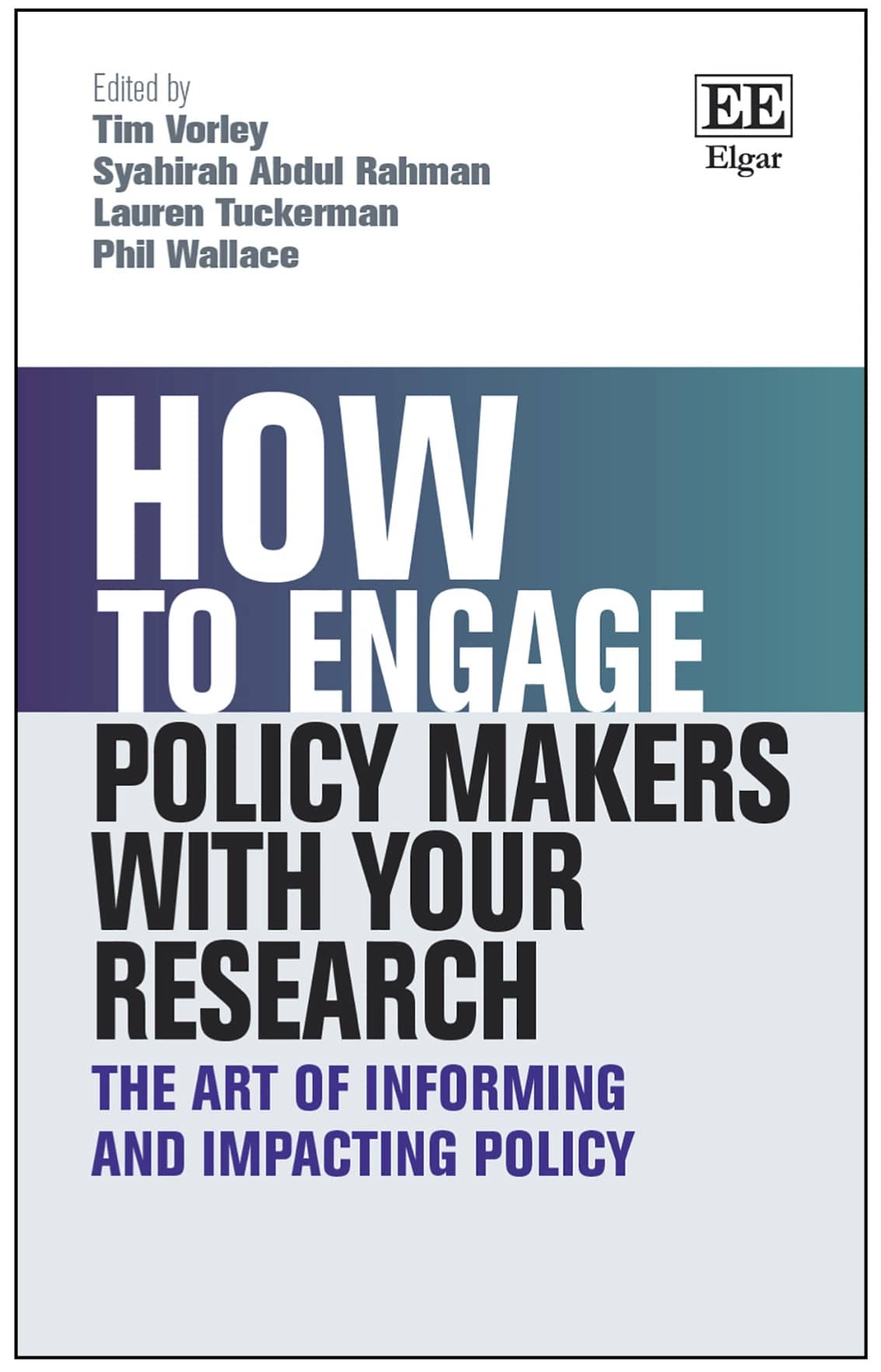
www.buildingsandcities.org/insights/reviews/engage-policy-makers.html
How to Engage Policy Makers with Your Research: The Art of Informing and Impacting Policy
Edited by: Tim Vorley, Syahirah Abdul Rahman, Lauren Tuckerman, Phil Wallace. Edward Elgar Publishing, 2022, ISBN: 978 1 80037 895 7
Richard Simmons (University College London) applauds this excellent book that chronicles the successes, failures and investigations of a wide range of academics to distil sound and practical advice on how evidence can be best communicated to get research findings into realpolitik. This book is a must read for every researcher who wants their work to reach policymakers.

In 1999, UK Prime Minister Tony Blair launched his 'Modernising Government' initiative, demanding evidence-based policy making. In 2023, many believe his reputation remains tarnished by his decision to invade Iraq in 2003 in pursuit of weapons of mass destruction, for which, it turned out, there was no evidence. Should we be surprised?
Studies of whether politicians and public servants take evidence into account before making decisions tend to answer: 'sometimes'. It is natural that data agreeing with the ruling political ideology or supporting manifesto commitments are likely to get more airtime. Yet policy does not usually appear out of thin air. When it does, it is difficult to deliver. Even the greatest ideologue or populist needs to know what problems to address and what might give traction over them. Prejudices can be evidence too: policymakers need to understand them. Inevitably, evidence is important in the mix when developing policy and measuring its impact.
Then the questions are: Where is the evidence? How trustworthy is it? How easy is it to digest? Does it lead to practical applications? Does it tell us what works? Academia is one obvious place to ask but, as the authors of what should be an essential companion for academic researchers point out, there are obstacles to getting research findings out of universities and institutes and into realpolitik.
It is those obstacles this book will help overcome. It is thorough, comprehensive and digestible. Much wisdom and experience are distilled into punchy, well-structured and practical articles that will save researchers time and energy. There are useful pull-outs with top tips and good examples, as well as thorough but readable in-depth analyses of research and case studies, illustrating how best to steer a course through the tricky waters of UK national and local government policy creation. Examples include (though are not limited to) how to take advantage of the UK Parliamentary Office of Science and Technology's Fellowship programme for PhD students (Rose & Tyler, 'The value of research evidence for policy', p. 33); how to find a shared language with non-specialists (Foxen & Bermingham, 'Speaking a Shared Language', Ch. 4); embedding researchers in policymaking environments (Hill et al., 'Co-producing policy relevant research', p. 80), how to work as a critical friend (something close to this author's experience) (Johnson et al., 'Critical Friends - real time insights for shaping strategy', Ch. 10); and the challenges of establishing a place-based research institute, which the UK fails at more than it succeeds but which has proved its value abroad (Riley et al., 'The City-Region Economic Development Institute - establishing a successful place-based research institute to support regions in turbulent times and beyond', Ch. 19). Many more good examples can be found in the book.
These waters are hard to navigate. Just working out where to make an input and whose attention to seek is difficult. A great strength of the book is the breadth of its advice, which draws on the successes, failures and investigations of a wide range of academics (including post-grads) over the full span of disciplines. It is hard to think of any stone left unturned. From direct contracting with ministries, through sponsored research programmes, via partnerships with devolved bodies and think tanks, to influencing by other means, the authors offer sound, practical advice.
Perhaps the only area left for exploration is how research might be used to inform future policy makers while they undertake their first degrees. Learning about actual investigations that demonstrate the uses and value of research should help create clients knowledgeable in how to direct policy founded in real-world precepts, not just theory and ideology.
This book should be on the tablet, workbench or desk of every researcher who wants their work to do more than gather virtual dust in an online archive.